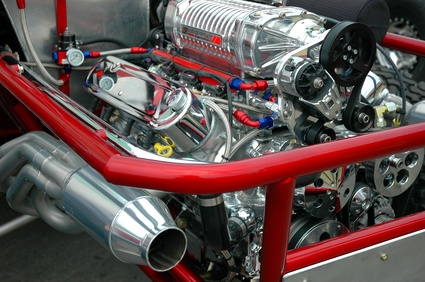
A carburetor--usually found on top of a vehicle's engine--looks like a cylindrical apparatus with a small box on the side of it. It combines air and fuel in an internal combustion engine.
A properly working carburetor makes the engine run at its most efficient level. It consists of an open pipe through which air passes. Small holes in the pipe allow fuel to enter and mix with the air. A butterfly valve controls the flow and quantity of the air and fuel as they move through the pipe. The throttle--connected by rods and joints to the accelerator pedal on the vehicle--works with the butterfly valve to control the flow of fuel and air.
Fuel injection provides a more efficient and environmentally sound alternative for modern-day vehicles, pumping fuel through a small nozzle using high pressure. Carburetors, by contrast, utilize low pressure by rushing air through an intake valve to add fuel to the air stream.
In 1885, Karl Benz invented the carburetor, later improved by the Hungarian engineers, Janos Csonka and Donat Banki, according to MotorEra.com. In 1896, Frederick Lanchester made the first gasoline-operated car that used his carburetor design, and carburetors remained the predominant fuel delivery method until the 1980s, when fuel injection technology replaced it.